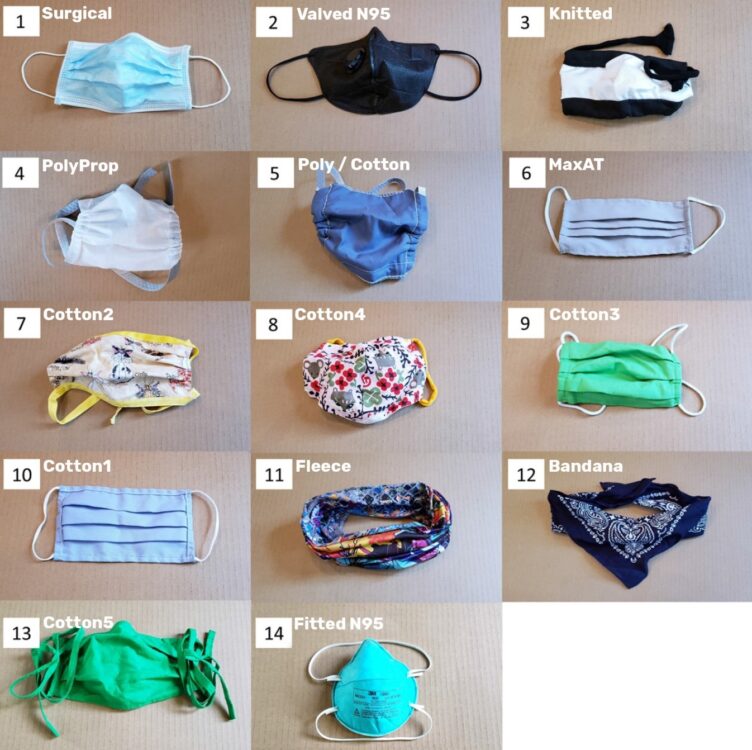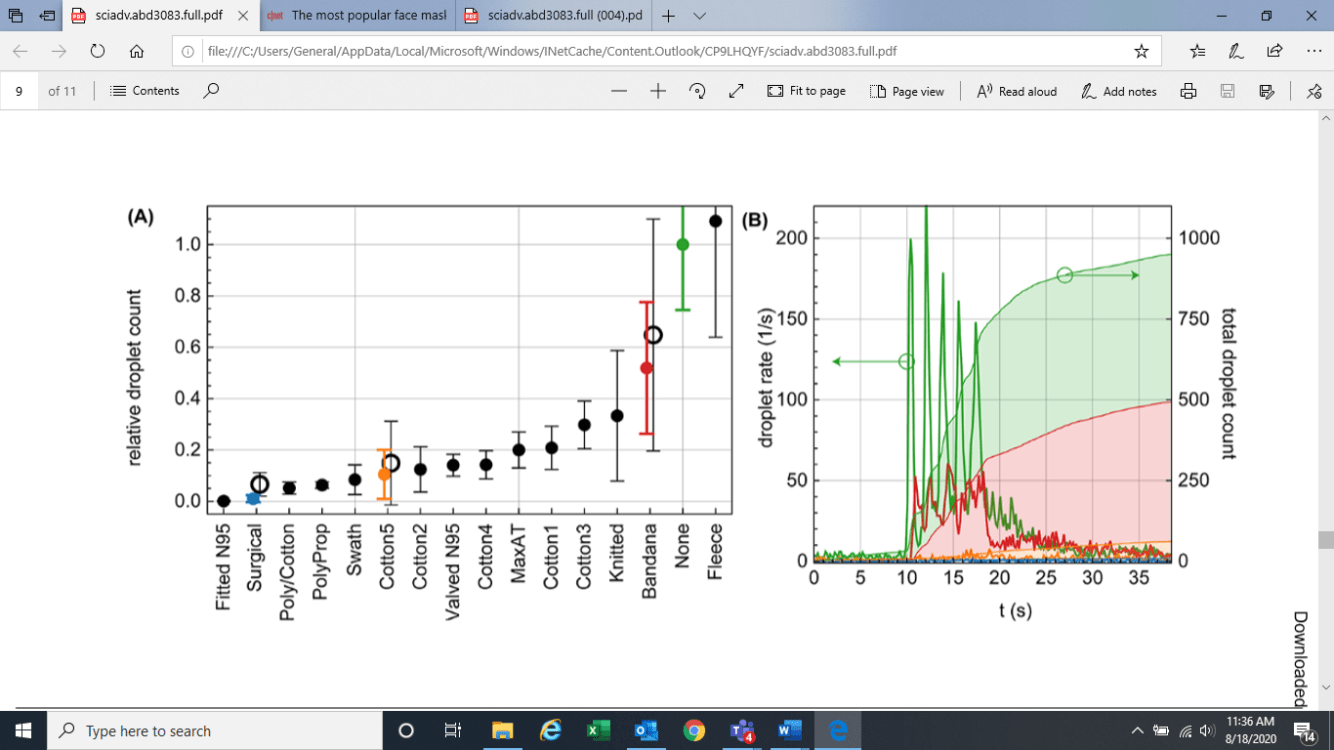Cloth face masks are one of the most trending products of 2020. From plain and simple masks to fancy designer options, there is a wide range of designs to choose from. But which of these masks is the most effective in doing what it’s designed to do – i.e. prevent droplets from falling on other people while talking, coughing or sneezing?
According to a recent study conducted by Fischer et al. which compares the efficacy of a variety of commonly available mask types, some cloth masks approach the performance of standard surgical masks while other mask alternatives like neck fleece or bandanas, offer very little protection. The study demonstrates the efficacy of the various mask types reviewed through a simple optical measurement method.
In brief, an operator wears a face mask and speaks into the direction of an expanded laser beam inside a dark enclosure. Droplets that propagate through the laser beam scatter light, which is recorded with a cell phone camera. A simple computer algorithm is used to count the droplets in the video. The greater number of droplets recorded, the less the efficacy of the mask. *
A total of 14 commonly found masks were reviewed as part of this study. Figure 1 shows the masks that were compared.

Fig 1. Pictures of face masks under investigation. 14 different face masks or mask alternatives and one mask material (not shown) were tested. Photo Credit: Emma Fischer, Duke University.
Results of the study were plotted on the graph below in Figure 2. From the graph, it is clear that while the fitted N95 and surgical mask offer the most protection, the poly/cotton and PolyProp come very close in performance. The graph also clearly shows that the bandana and fleece offer the least protection.

Fig.2. Droplet transmission through face masks. (A) Relative droplet transmission through the corresponding mask. Each solid data point represents the mean and standard deviation over 10 trials for the same mask, normalized to the control trial (no mask), and tested by one speaker. The hollow data points are the mean and standard deviations of the relative counts over four speakers. A plot with a logarithmic scale is shown in Supplementary Fig. S1. (B) The time evolution of the droplet count (left axis) is shown for representative examples, marked with the corresponding color in (A): No mask (green), Bandana (red), cotton mask (orange), and surgical (blue – not visible on this scale). The cumulative droplet count for these cases is also shown (right axis).
With mandatory face masks in public being the norm for the foreseeable future, it is wise to get the right kind of mask for maximum protection and comfort.
*The article was based on a research article published in Science Advances. Fischer et al., Sci. Adv. 10.1126/sciadv.abd3083 (2020). The article is titled ‘Low-cost measurement of facemask efficacy for filtering expelled droplets during speech’
https://advances.sciencemag.org/content/early/2020/08/07/sciadv.abd3083

